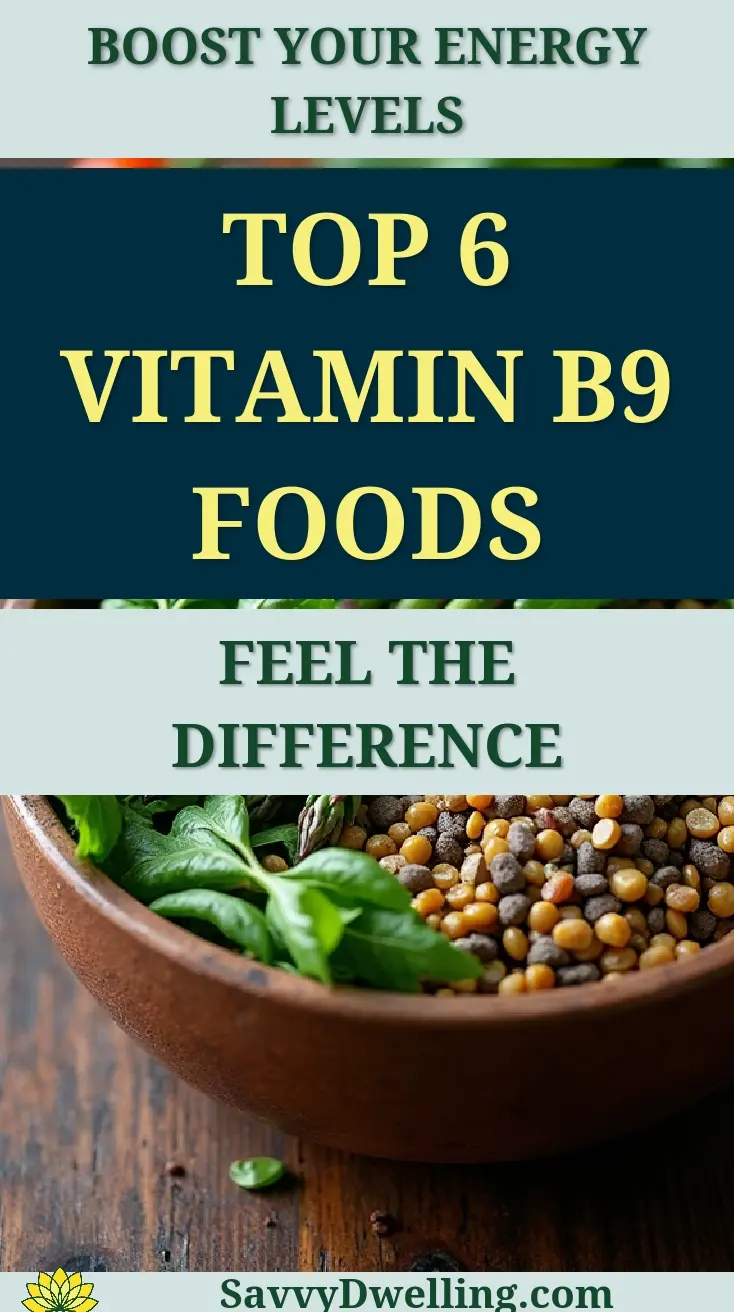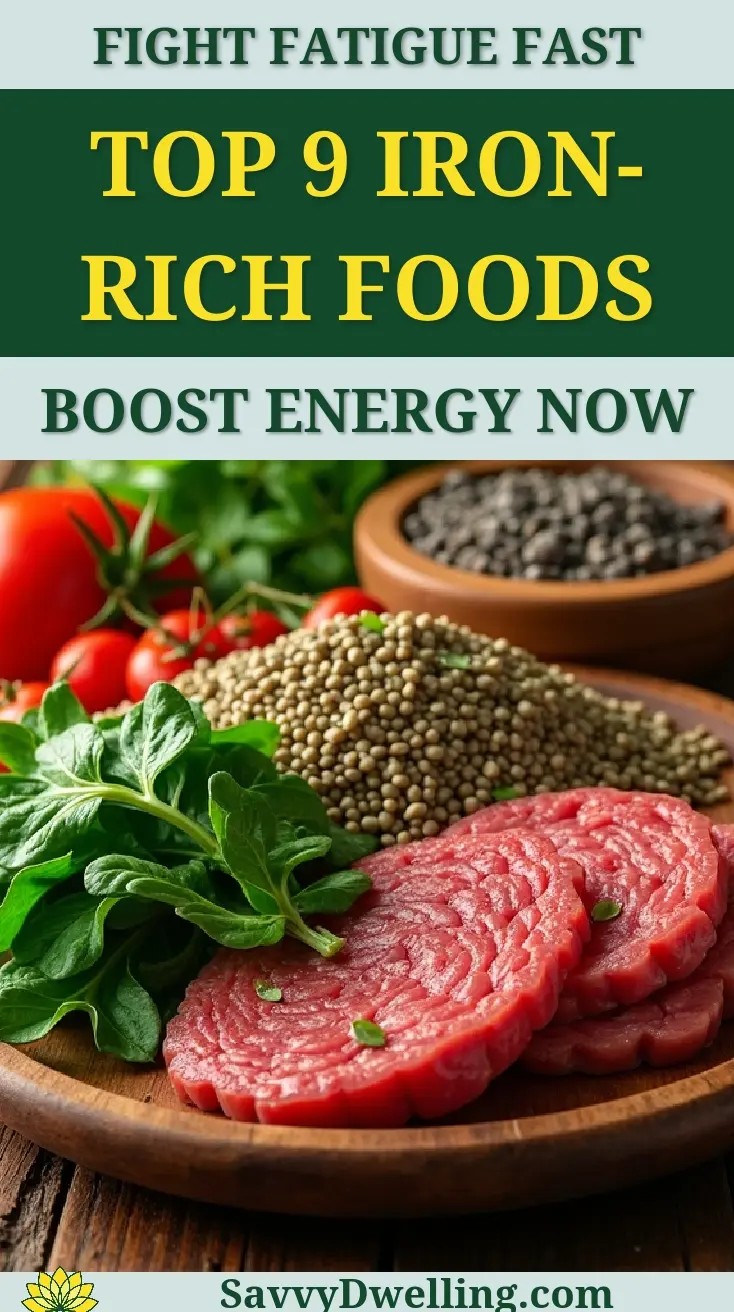The Complete Guide to Low-glycemic Foods That Deliver All-day Energy
Tired of the afternoon energy crash that leaves you reaching for another cup of coffee or sugary snack? You’re not alone in struggling with energy dips that make even simple tasks feel overwhelming. These rollercoaster energy patterns often stem from foods that spike your blood sugar, followed by inevitable crashes that drain your focus and motivation.
This guide will show you exactly which low-glycemic foods provide steady, reliable energy without the dramatic highs and lows. After researching countless nutrition studies and testing various approaches, we’ve compiled the most effective food choices and practical strategies that truly work. You’ll learn simple swaps and combinations that transform how you feel throughout your day.
Contents
- At a Glance: The Best Low-glycemic Solutions
- The Science Made Simple: Why Low-glycemic Foods Support Stable Energy
- 1. Protein-rich Foods That Keep You Energized
- 2. Non-starchy Vegetables for Natural Energy Support
- 3. Smart Whole Grain Choices for Long-lasting Energy
- 4. Legumes and Pulses: Nature’s Energy Powerhouses
- 5. Low-glycemic Fruits That Won’t Spike Blood Sugar
- 6. Healthy Fats That Enhance Energy Stability
- 7. Low-glycemic Snack Combinations for Energy Maintenance
- Common Mistakes to Avoid When Following a Low-glycemic Approach
- Frequently Asked Questions
- Final Words
At a Glance: The Best Low-glycemic Solutions
When you’re navigating the world of low glycemic foods, having a clear roadmap makes all the difference. This quick reference guide shows you exactly which foods deliver steady energy without the blood sugar rollercoaster.
Each category works differently to support your energy goals, from immediate satiety to long-term glucose stability. The glycemic index ranges help you make smart choices, while the energy benefits explain why these foods earn their place on your plate.
| Food Category | Top Choices | Glycemic Index Range | Energy Benefit |
|---|---|---|---|
| Proteins | Eggs, Greek yogurt, lean meats | 0-15 | Sustained fullness, muscle support |
| Non-Starchy Vegetables | Leafy greens, broccoli, peppers | 10-15 | Nutrient density, blood sugar stability |
| Whole Grains | Steel-cut oats, quinoa, barley | 25-55 | Steady glucose release, fiber support |
| Legumes | Lentils, chickpeas, black beans | 10-35 | Protein-fiber combination, energy balance |
| Healthy Fats | Avocado, nuts, olive oil | 0-15 | Slow digestion, appetite control |
Notice how protein-rich foods and healthy fats score lowest on the glycemic index scale. These foods create minimal blood sugar response while providing maximum satiety power. Your body processes them slowly, creating that steady energy flow you’re after.
Non-starchy vegetables pack impressive nutrient density into their low glycemic footprint. Meanwhile, the best low glycemic index foods from whole grains and legumes offer slightly higher numbers but deliver crucial fiber and complex carbohydrates your body needs for sustained performance.
This glycemic index food chart becomes your daily decision-making tool. Keep these ranges in mind when planning meals, and you’ll naturally gravitate toward choices that support stable blood sugar and consistent energy throughout your day.
The Science Made Simple: Why Low-glycemic Foods Support Stable Energy
Understanding the Glycemic Index
The glycemic index measures how quickly foods raise your blood sugar on a scale of 0 to 100. Foods with a low glycemic index (55 or below) release glucose gradually into your bloodstream, preventing the energy roller coaster that leaves you feeling drained.
Think of it like fueling a fireplace. High-glycemic foods are like throwing newspaper on the fire-they create a quick burst of flames that burn out fast. Low glycemic foods are like adding steady logs that burn slowly and consistently for hours.
The best low glycemic index foods include proteins, non-starchy vegetables, and foods high in fiber or healthy fats. These glycemic foods help maintain balanced blood sugar levels throughout your day. Incorporating these types of foods into your diet is essential for keeping blood sugar stable, especially for diabetics. Foods like legumes, nuts, and whole grains are excellent options that can support healthy glucose control.
How Blood Sugar Spikes Affect Your Energy
When you eat high-glycemic foods, your blood sugar shoots up rapidly. Your pancreas responds by releasing a flood of insulin to bring those levels back down. This process often causes blood sugar to drop below normal levels, triggering fatigue, irritability, and intense cravings for more sugary foods.
You’ve probably experienced this cycle before-the mid-afternoon crash after a sugary breakfast, or feeling exhausted an hour after eating a large bowl of pasta. Low glycemic index foods break this destructive pattern by providing steady glucose without the dramatic spikes and crashes.
Research shows that people following a low glycemic diet experience more stable energy levels throughout the day. They also report better concentration and fewer mood swings compared to those eating high-glycemic foods regularly.
The Role Of Fiber and Protein in Glucose Management
Fiber acts like a protective barrier around carbohydrates, slowing their absorption into your bloodstream. Foods with high fiber content naturally have lower glycemic values because the glucose is released more gradually. This is why an apple with its skin ranks lower on the glycemic index than apple juice.
Protein plays a different but equally important role in energy stability. When you include protein with your meals, it slows gastric emptying and helps moderate the glucose response from any carbohydrates you eat. This combination effect is why pairing an apple with almond butter creates better blood sugar stability than eating the apple alone.
The magic happens when you combine foods strategically. A meal containing protein, healthy fats, and low-glycemic carbohydrates creates the most stable energy response your body can achieve.

1. Protein-rich Foods That Keep You Energized
Eggs: The Perfect Energy Foundation
Eggs rank at zero on the glycemic index, making them one of the best low glycemic foods for stable energy. A single large egg provides 6 grams of complete protein containing all nine amino acids your body needs for sustained energy production.
The protein in eggs helps slow down the absorption of any carbohydrates you eat alongside them. Starting your day with eggs can significantly reduce the glycemic impact of your entire breakfast, keeping your energy steady until lunch.
Research indicates that people who eat eggs for breakfast feel fuller longer and consume fewer calories throughout the day compared to those who start with high-carbohydrate meals. The choline in eggs also supports brain function and mental energy.
Greek Yogurt and Low-fat Dairy Options
Plain Greek yogurt contains twice the protein of regular yogurt with a glycemic index of just 11. The probiotics in Greek yogurt may help improve glucose metabolism, while the protein content helps maintain steady blood sugar levels for hours.
Choose plain varieties over flavored options, which often contain added sugars that spike the glycemic index. You can create satisfying low-glycemic combinations by adding berries, nuts, or a drizzle of unsweetened almond butter to plain Greek yogurt. Many seemingly healthy foods can actually be surprisingly high in sugar, which can affect your overall diet. It’s always good to be aware of the hidden sugars in foods you might not expect.
Low-fat cottage cheese is another excellent choice with a glycemic index of 10. The casein protein in cottage cheese digests slowly, providing sustained amino acids to your muscles and helping maintain stable energy overnight.
Lean Meats and Fish for Sustained Power
All lean meats and fish have a glycemic index of zero, making them perfect anchors for low glycemic meals. Salmon, chicken breast, turkey, and lean beef provide high-quality protein that helps regulate blood sugar when paired with other foods. Including salmon in your diet not only boosts protein intake but also offers essential omega-3 fatty acids, which are known to support heart health and reduce inflammation.
Fatty fish like salmon and mackerel offer additional benefits through omega-3 fatty acids, which may improve insulin sensitivity. These healthy fats also slow digestion, further stabilizing blood glucose levels after meals.
The protein content in these foods ranges from 20-25 grams per 3.5-ounce serving. This substantial protein load helps trigger satiety hormones that prevent overeating and maintain steady energy levels between meals.
Preparation Tips for Maximum Benefits
- Grill, bake, or poach proteins instead of frying to avoid adding unnecessary fats that can slow digestion excessively
- Marinate lean meats in herbs and citrus to enhance flavor without adding sugars that could affect glycemic response
- Pair proteins with non-starchy vegetables and a small portion of low-glycemic grains for balanced meals
- Cook proteins in batches on weekends to ensure you always have low-glycemic options ready for quick meals
- Use portion sizes about the size of your palm (3-4 ounces) to optimize protein benefits without overconsumption
Also See: 10 Surprising Reasons Dark Chocolate is a Superfood
2. Non-starchy Vegetables for Natural Energy Support
Leafy Greens: Spinach, Kale, and Arugula
Leafy greens rank among the lowest glycemic foods available, with values typically between 10-15. Spinach provides folate and iron that support cellular energy production, while kale delivers vitamin C and antioxidants that help reduce inflammation.
These vegetables are incredibly nutrient-dense, meaning you get maximum nutritional value with minimal impact on blood sugar. A large salad of mixed greens can fill you up and provide sustained energy without causing any glucose spikes.
Arugula contains glucosinolates that may help improve insulin sensitivity over time. The peppery flavor also adds variety to your meals, making it easier to stick with a low glycemic diet long-term.
Cruciferous Vegetables: Broccoli, Cauliflower, Brussels Sprouts
Cruciferous vegetables have glycemic index values between 10-25, with high fiber content that promotes stable blood sugar. Broccoli provides chromium, a mineral that may enhance insulin function and improve glucose metabolism.
Cauliflower has become popular as a low-carb substitute for grains and potatoes. One cup of cauliflower contains only 5 grams of carbohydrates compared to 45 grams in white rice, making it an excellent choice for glycemic index diets.
Brussels sprouts contain alpha-lipoic acid, an antioxidant that may help improve insulin sensitivity. The fiber content also promotes healthy gut bacteria that play a role in glucose regulation.
Colorful Bell Peppers and Zucchini
Bell peppers have a glycemic index of just 15 and provide vitamin C that supports adrenal function during stress. The natural sweetness of red and yellow peppers can satisfy sugar cravings without affecting blood glucose levels.
Zucchini ranks even lower at 10 on the glycemic index and can be spiralized into noodles as a pasta substitute. This versatile vegetable absorbs flavors well and adds volume to meals without contributing significant carbohydrates.
Both vegetables provide potassium, which helps regulate fluid balance and may support healthy blood pressure. The high water content also helps with hydration, which affects energy levels throughout the day. Including potassium-rich foods is essential, as they play a crucial role in managing high blood pressure. Some of the best foods known to lower high blood pressure include leafy greens, bananas, and beets.
How to Incorporate More Vegetables into Every Meal
- Start each meal by filling half your plate with non-starchy vegetables before adding other foods
- Prep vegetables on Sunday by washing, chopping, and storing them in clear containers for easy access
- Add spinach or kale to smoothies along with low-glycemic fruits for nutrient-dense breakfast options
- Use vegetables as wraps instead of tortillas-large lettuce leaves work perfectly for sandwich wraps
- Roast a variety of vegetables with herbs and olive oil to create flavorful side dishes for the week
- Keep frozen vegetables on hand for quick additions to scrambled eggs, soups, and stir-fries
- Try vegetable-based snacks like cucumber slices with hummus or bell pepper strips with guacamole
3. Smart Whole Grain Choices for Long-lasting Energy
Steel-cut Oats Vs. Instant Oatmeal
Steel-cut oats digest slowly, so they deliver steady fuel without a sugar surge. Their low glycemic index (about 42–52) comes from minimal processing and intact oat groats. Instant oatmeal cooks fast, but many packets add sugar and have a higher glycemic index food profile (about 60–79).
Make steel-cut oats weeknight-easy with simple prep. Soak 1 cup oats in 2 cups water overnight, then simmer 10 minutes with 1 more cup water. Or pressure-cook 1:3 oats-to-water for 10 minutes, natural release.
- Best add-ins for a low glycemic diet: chia or flax, peanut butter, Greek yogurt, cinnamon.
- Label check: pick plain oats; flavored packets spike the food glycemic index.
Quinoa: The Complete Protein Grain
Quinoa brings all nine amino acids plus a steady low glycemic index (about 50–53). That protein-fiber combo supports long-lasting energy on low gi diets. It’s gluten-free and cooks in under 15 minutes.
Rinse well to wash off bitter saponins. Cook 1 cup quinoa in 1¾ cups water, simmer 12–15 minutes, rest 5 minutes. Fold in olive oil, lemon, and chopped herbs for a fast low-glycemic food bowl.
- Pairings to lower glycemic load: roasted vegetables, chickpeas, avocado, tahini.
- Portion idea: ½–¾ cup cooked quinoa per meal for stable energy.
Barley, Bulgur, and Other Ancient Grains
Barley is one of the best low glycemic foods because its beta-glucan fiber slows digestion. Bulgur (parboiled cracked wheat) is quick, nutty, and usually low–moderate on glycemic index lists. Farro, freekeh, and teff round out a list of low glycemic index foods with hearty texture and staying power.
| Grain | Typical GI Range | Fiber (per 1 cup cooked) | Cook Ratio & Time |
|---|---|---|---|
| Steel-cut oats | 42–52 | ~4 g | 1:3–4 water; 20–30 min |
| Instant oatmeal (plain) | 60–79 | ~4 g | 1:2 water; 1–2 min |
| Quinoa | 50–53 | ~5 g | 1:1.75 water; 12–15 min |
| Barley (pearled) | 25–30 | ~6 g | 1:3 water; 30–40 min |
| Bulgur | 46–53 | ~8 g | 1:1.5 boiling water; soak 10–15 min |
| Farro (pearled) | ~45–55 | ~5 g | 1:2.5 water; 15–25 min |
| Teff | ~45–57 | ~7 g | 1:3 water; 15–20 min |
- Barley tip: use hulled barley when you can; it retains more bran and tends to be lower GI.
- Freekeh (roasted green wheat) cooks in 20 minutes and usually sits in the low–moderate GI zone.
Portion Control Guidelines for Grains
Let grains be the background, not the headliner. A low gi food plate works well when grains fill about one-quarter of the plate beside protein and vegetables.
- Everyday target: ½ cup cooked grains (about a cupped hand) per meal.
- Higher-activity days: up to ¾–1 cup cooked, especially around workouts.
- Carb reality check (per 1 cup cooked): oatmeal ~27 g, quinoa ~39 g, bulgur ~33 g, barley ~44 g.
- Keep glycemic load gentle by pairing grains with protein (eggs, beans, yogurt) and healthy fats (olive oil, nuts).
- Batch-cook strategy: cook 3 cups dry grain weekly, portion into ½-cup containers, freeze, and reheat as needed.

4. Legumes and Pulses: Nature’s Energy Powerhouses
Lentils: Red, Green, and Black Varieties
Lentils are low gi foods that balance protein and fiber for even energy. GI usually lands around 21–35, with whole green/brown/black lentils on the lower end and split red lentils a touch higher.
- Red (split): soft, fast-cooking, great for soups and dals; 12–15 minutes.
- Green/Brown: hold shape for salads and bowls; 20–25 minutes.
- Black (Beluga): tiny, glossy, and sturdy; 20–25 minutes.
- Per ½ cup cooked (approx.): 9 g protein, 8 g fiber.
Chickpeas and Hummus Benefits
Chickpeas sit low on the glycemic index (about 28–33) and make meals more satisfying. Hummus is even lower GI because tahini and olive oil slow digestion, making it a smart low-glycemic food spread or dip.
- Choose no-salt-added canned chickpeas and rinse to reduce sodium.
- Roast with paprika and cumin for a crunchy snack from the low glycemic foods list.
- Spread hummus in wraps or pair with veggie sticks for steady, glycemic index high energy foods without the spike.
Black Beans, Navy Beans, and Kidney Beans
These beans typically score 24–31 on GI tests and bring a gentle rise in blood sugar. They pack fiber (7–9 g) and protein (7–8 g) per ½ cup cooked.
- Black beans: rich color means extra polyphenols; great in bowls with quinoa and salsa.
- Navy beans: creamy texture for soups and casseroles.
- Kidney beans: hearty in chili; simmer with tomatoes and spices.
- Rinse canned beans to reduce sodium by up to 40%.
Quick Cooking Methods to Save Time
- Same-day soak shortcut: pour boiling water over dry beans (1:3 beans-to-water), cover 1 hour, drain and cook.
- Pressure-cooker basics: unsoaked beans cook in 25–40 minutes (lentils 6–10 minutes); natural release for best texture.
- Batch and freeze: cook 2–3 pounds at once, cool, portion 1–1½ cups in flat freezer bags, label, and freeze.
- Weeknight speed: choose canned, no-salt-added beans; rinse 30 seconds; warm with garlic, olive oil, and cumin.
- Texture tip: add acid (tomato, vinegar) after beans are tender to avoid tough skins.
5. Low-glycemic Fruits That Won’t Spike Blood Sugar
Berries: Blueberries, Strawberries, and Raspberries
Berries are some of the best low glycemic index foods because they deliver fiber with natural sweetness. Strawberries sit around GI 40, raspberries around GI 32, and blueberries generally stay moderate with a low glycemic load thanks to portion size. Blueberries not only satisfy a sweet tooth but also come packed with numerous health benefits. For instance, they are known to boost heart health, support brain function, and may even help in managing weight.
- Fiber per cup: raspberries ~8 g, strawberries ~3 g, blueberries ~3–4 g.
- Energy tip: mix berries into Greek yogurt or chia pudding to steady the rise in glycemic foods.
- Frozen berries work as well as fresh for glycemic index diets.
Apples and Pears With Skin
Keeping the peel on provides pectin and polyphenols that slow digestion and support steady energy. Apples usually test GI 36–44; pears around 33–38.
- One medium fruit gives roughly 4–6 g fiber on a low gi diet.
- Pair with almond butter or cheese to keep the food glycemic index lower at snack time.
- Slice and squeeze lemon to prevent browning for lunchboxes.
Citrus Fruits: Oranges and Grapefruits
Whole citrus is low on the glycemic index list and hydrating. Oranges land around GI 40–45, while grapefruit often sits near GI 25.
- Choose whole segments over juice to keep fiber intact and the glycemic index low.
- Try citrus with beans or greens; vitamin C supports iron absorption from plant foods.
- Portion: 1 small–medium orange or ½ large grapefruit per serving.
Timing Your Fruit Intake for Optimal Energy
Use fruit when you want a gentle lift, not a spike. The goal is steady release by combining fruits with protein or fat.
- Morning: add berries to yogurt or oats to balance glycemic index foods at breakfast.
- Pre-workout (30–60 minutes): a small banana or orange with a few nuts for quick-to-access carbs plus staying power.
- Midday: apple slices with peanut butter to bridge the afternoon without a crash.
- Post-meal dessert: a cup of berries after lunch satisfies sweet cravings while keeping the low glycemic index steady.
- Evening: if you want fruit, keep portions modest and pair with protein to avoid a fast rise and fall overnight.
6. Healthy Fats That Enhance Energy Stability
Avocados: The Creamy Energy Stabilizer
Avocado pairs fiber with oleic acid (a monounsaturated fat), which slows digestion and supports a steady release of energy from carbohydrate foods. Half a medium avocado offers about 6–7 grams of fiber and virtually no glycemic load, so it fits smoothly into a low glycemic diet.
- Portion guide: 1/4–1/2 avocado per meal.
- Energy-friendly uses: mash with lime and salt over tomato slices; cube into bean salads; blend into a smoothie for creaminess without added sugar.
- Flavor boosts: citrus, herbs, and a pinch of salt make low glycemic foods taste richer and more satisfying.
Nuts and Seeds: Almonds, Walnuts, and Chia Seeds
Nuts and seeds add crunch, fiber, and healthy fats that blunt rapid blood sugar swings from higher-glycemic foods. They’re compact, shelf-stable, and easy to portion, which keeps your low gi diet practical—especially when you include walnuts and other healthful nuts.
- Almonds (1 oz/28 g): ~6 g protein, ~3–4 g fiber, low glycemic index impact.
- Walnuts (1 oz): ~2.5 g ALA omega-3s, supports fullness and balanced energy.
- Chia seeds (2 Tbsp): ~10 g fiber and gel-forming soluble fiber that slows glucose release.
- Quick chia pudding: mix 2 Tbsp chia + 1/2 cup milk (dairy or unsweetened soy/almond) + cinnamon. Chill 20–30 minutes.
- Smart trail mix: 2 parts almonds or walnuts, 1 part pumpkin seeds, 1 part unsweetened coconut flakes. Portion into 1/4-cup bags.
- Yogurt topper: sprinkle 1 Tbsp chia or chopped nuts over plain Greek yogurt to turn it into a low glycemic index snack.
Olive Oil and Other Heart-healthy Oils
Fats have a glycemic index of zero, and a drizzle of the right oil can reduce the overall glycemic impact of a meal by slowing absorption. Extra-virgin olive oil (EVOO) adds polyphenols and flavor; avocado oil offers a high smoke point for hotter cooking.
| Oil | Best Use | Approx. Smoke Point |
|---|---|---|
| Extra-Virgin Olive Oil | Dressings, medium-heat sauté | 375–410°F (190–210°C) |
| Avocado Oil | High-heat roasting, grilling | 480–520°F (250–270°C) |
| Canola Oil | Everyday cooking, baking | ~400°F (205°C) |
| Walnut Oil | Cold uses (drizzle on salads) | ~320°F (160°C) |
- Choose quality: look for dark glass bottles and “harvest date” on EVOO.
- Portion: 1–2 tsp per meal goes a long way for low glycemic index meals.
Balancing Fat Intake Throughout the Day
Think “small amounts, every meal.” You’ll steady energy without overdoing calories while keeping your low glycemic foods list flexible.
- At breakfast: 1–2 tsp olive oil for eggs or 1 Tbsp nuts in oatmeal.
- At lunch: 1/4 avocado in a salad or wrap with legumes or other low gi foods.
- At dinner: 1–2 tsp oil for cooking and a final drizzle for flavor.
- Snacks: 1 Tbsp nut butter, a 1 oz nut pack, or a 2 Tbsp chia pudding cup.
- Handy equivalences: 1 Tbsp oil ≈ one thumb; 1 oz nuts ≈ one small cupped hand.
- Pair fats with protein and fiber to keep glycemic foods balanced.
7. Low-glycemic Snack Combinations for Energy Maintenance
Apple Slices With Almond Butter
An apple (GI ~36–40) plus almond butter delivers fiber + fat for long-lasting energy with a gentle glucose curve. This simple pairing fits any low glycemic foods list and feels like a treat without added sugar.
- Slice 1 small apple; toss with a little lemon to reduce browning.
- Spread or dip into 1 Tbsp unsalted almond butter.
- Optional: dust with cinnamon for sweetness without spiking a glycemic index food.
- On-the-go tip: portion almond butter in 1 Tbsp packets and pre-slice apples.
Greek Yogurt With Berries and Nuts
Greek yogurt provides protein that slows digestion, while berries (GI ~25) add fiber and antioxidants for a low-glycemic food combo. Nuts add healthy fats to round out this low gi food trifecta.
- Spoon 3/4–1 cup plain Greek yogurt into a jar.
- Add 1/2 cup blueberries or strawberries and 1 Tbsp chopped walnuts or almonds.
- Stir in vanilla extract or cinnamon instead of sweeteners to keep it in the best low glycemic index foods zone.
- Swap-ins: chia or flax for crunch if you prefer seed-based toppings.
Hummus With Vegetable Sticks
Hummus (from chickpeas; GI ~6) pairs with raw veggies for a fiber-forward, satisfying snack that supports stable energy. It’s budget-friendly and portable, making glycemic index diets easier to follow.
- Portion 1/4 cup hummus (about 2–3 Tbsp) into a small container.
- Slice carrots, cucumbers, peppers, and celery into sticks.
- Sprinkle hummus with smoked paprika or sesame for flavor without sugar.
- Protein twist: swirl in 1 Tbsp plain Greek yogurt to boost creaminess and protein.
Meal Prep Strategies for Healthy Snacking
A little weekend prep sets you up for steady energy all week. You’ll have low glycemic index foods ready before hunger hits.
- Materials: cutting board, sharp knife, small containers (4–8 oz), lemon juice, measuring spoons, cooler bag with ice pack.
- Plan 2–3 snack combos from the glycemic foods list you enjoy most.
- Pre-portion: nuts (1 oz packs), hummus (1/4 cup), almond butter (1 Tbsp cups).
- Wash and cut produce; toss apple slices with lemon; store veggies with a damp paper towel.
- Assemble yogurt jars with berries and chia; keep nuts separate until eating.
- Label with the prep date and target day (e.g., “Wed AM”).
- Storage times: yogurt jars 3–4 days; hummus packs 4–5 days; apple slices 1–2 days.
Common Mistakes to Avoid When Following a Low-glycemic Approach
Eliminating All Carbohydrates
You don’t need to cut carbs to stabilize energy-you need the right carbs in the right amounts. Whole-food carbs like lentils, steel-cut oats, berries, and apples sit on any sensible list of low glycemic foods and support an active day.
- Try a quarter-plate of foods with low glycemic index at meals, paired with protein and healthy fat.
- Use the glycemic index list as a guide, not a rulebook.
Ignoring Portion Sizes
Even low gi foods can overshoot energy needs if portions creep up. Fats are calorie-dense, and “free-pouring” oils or nut butters adds up fast.
- Quick cues: 1 Tbsp oil = thumb; 1 oz nuts = small cupped hand; 1/2 cup cooked grains = tennis ball; 3–4 oz protein = deck of cards.
- Plate method: 1/2 non-starchy veggies, 1/4 protein, 1/4 low glycemic food, plus a small fat.
Relying Too Heavily on Processed “Low-gi” Products
Marketing can be misleading-“low-GI” cookies or bars may still be ultra-processed and easy to overeat. Focus on the best low glycemic foods that are minimally processed for better fullness and energy stability.
- Scan labels: short ingredients list; watch for added sugars and sugar alcohols.
- Prioritize whole foods first; use packaged low glycemic index foods as occasional backups.
- When you see “glycemic index high energy foods,” translate that to: fiber-rich, protein-supported, and minimally processed.
Not Combining Foods Strategically
Carbs alone digest faster; pairing them with protein, fiber, and fat slows the release of glucose. This simple “P-F-F” formula keeps a glycemic diet steady.
- Examples: apple + almonds; quinoa + chickpeas + olive oil; berries + Greek yogurt + chia.
- Rule of thumb: every snack should include at least two of the three-protein, fiber, or fat.
Skipping Meals and Creating Energy Crashes
Long gaps between meals can lead to sharp hunger and overeating higher-glycemic foods later. Gentle structure keeps energy smooth without feeling rigid.
- Anchor meals 3–4 hours apart with low gi foods and protein.
- Add a “bridge snack” if the gap exceeds 4 hours (like hummus + veggies or yogurt + nuts).
- Keep an emergency stash: 1 oz nut packs, low-glycemic food bars with short ingredient lists, and shelf-stable hummus cups.

Frequently Asked Questions
How Can I Easily Transition to a Low-glycemic Diet for Stable Energy?
Start by swapping high-glycemic staples like white bread or sugary snacks for low-glycemic alternatives, such as whole grains or legumes. Focus on building balanced meals that include protein, healthy fats, and fiber-rich vegetables to slow digestion and prevent energy crashes. Gradually incorporate more choices from the food categories outlined in this guide, and track your energy levels to see what works best for you. Including foods that naturally boost energy, like nuts and fruits, can enhance your diet and help maintain stable energy levels throughout the day.
Is a Low-glycemic Diet Suitable for Individuals With Diabetes or Prediabetes?
Yes, a low-glycemic diet can be beneficial for managing blood sugar, but always consult with a healthcare provider or dietitian first to tailor it to your needs. Emphasize whole, unprocessed foods and pair carbohydrates with protein or fat to minimize spikes. Monitoring portion sizes and timing meals consistently are key strategies for success.
How Quickly Might I Experience Improved Energy After Adopting Low-glycemic Eating?
Many people notice more stable energy within a few days to a week, as blood sugar levels become less erratic. For sustained benefits, stick with the diet long-term and combine it with healthy lifestyle habits like regular exercise and adequate sleep. Individual results can vary based on factors like metabolism and previous diet.
What Beverages Are Best for Maintaining Low-glycemic Energy Levels?
Opt for water, unsweetened tea, or black coffee, as they have minimal impact on blood sugar. Avoid sugary drinks like soda or fruit juices; if you crave flavor, try infusing water with lemon or herbs. Additionally, incorporating certain herbal teas into your routine can further support healthy blood pressure. Teas such as hibiscus and green tea have been shown to help lower blood pressure naturally.
Does Cooking Method Affect the Glycemic Index Of Foods?
Yes, cooking can alter glycemic index-overcooking or processing often increases it by breaking down fibers. To preserve low-glycemic benefits, steam, roast, or eat vegetables raw when possible, and choose whole grains over refined versions. For example, al dente pasta has a lower glycemic index than well-cooked pasta.
Final Words
You now have a complete roadmap to maintaining steady energy throughout your day using low-glycemic foods. The beauty of this approach lies in its simplicity – you don’t need expensive supplements or complicated meal plans, just smart food choices that work with your body’s natural energy systems.
Start small by swapping one high-glycemic food for a low-glycemic alternative each week. Replace your morning bagel with steel-cut oats topped with berries, or choose hummus with vegetables instead of crackers for your afternoon snack. These gradual changes will help you avoid the energy rollercoaster while keeping your taste buds satisfied.
Ready to transform your energy levels and create a healthier home environment? Check out Savvy Dwelling for more evidence-based wellness guides and practical home solutions that support your health goals. Your journey to sustained energy starts with your next meal – make it count.


